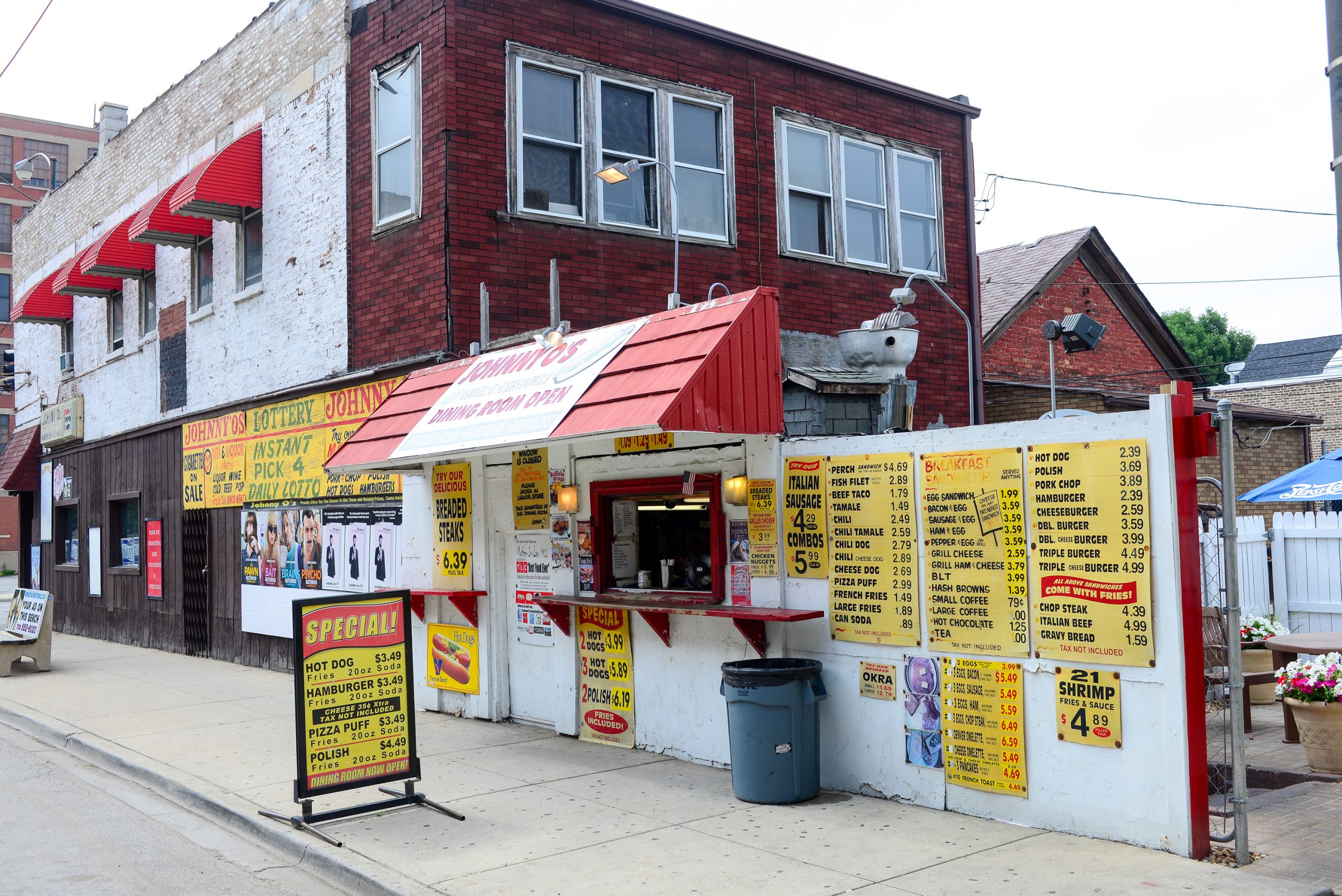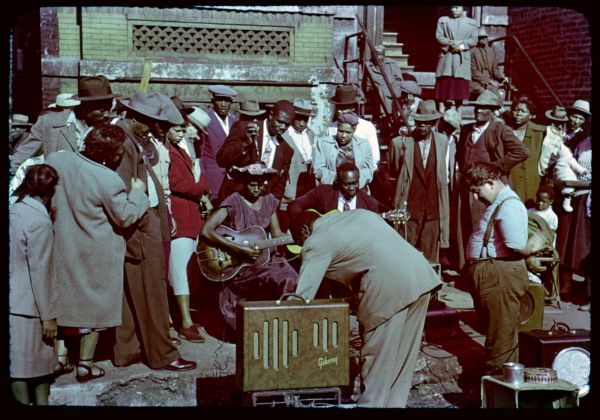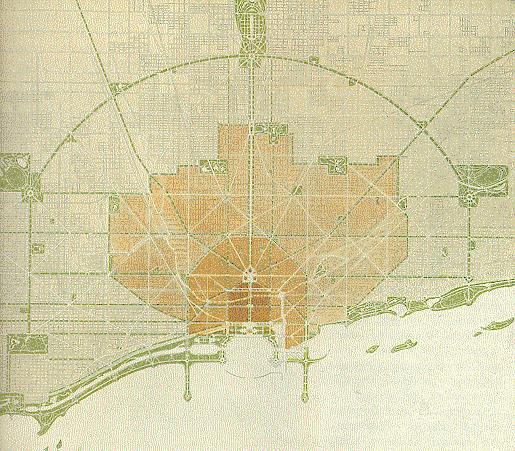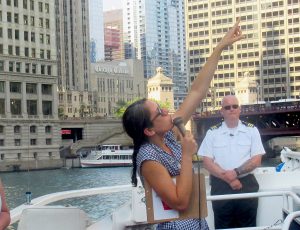The Austin neighborhood of Chicago has had some years of sweet glory. I mean that literally since a big candy factory once operated there. Austin is a primary example of a neighborhood that went through “white flight” in the ’50s. Because of that, the social and architectural make-up of the Austin neighborhood has dramatically changed over the decades. But you can find some surprising architectural relics from its earlier years of blossoming amid the bad headlines.
Tee-Totalers and Queen Anne Living
Long before Austin was home to the producers of your candy corn in October, it was an autonomous village. Henry Austin, the town’s founder, intended this area as a temperance settlement for the anti-drinking crowd. He wanted them to have a sober existence in a community with tree-lined parkways and comfortably-sized homes. Architect Frederick R. Schock purchased property here, and instead of printing business cards, Mr. Schock showed off his talents by designing his own home at 5804 W. Midway Park, in the Queen Anne Revival Style.
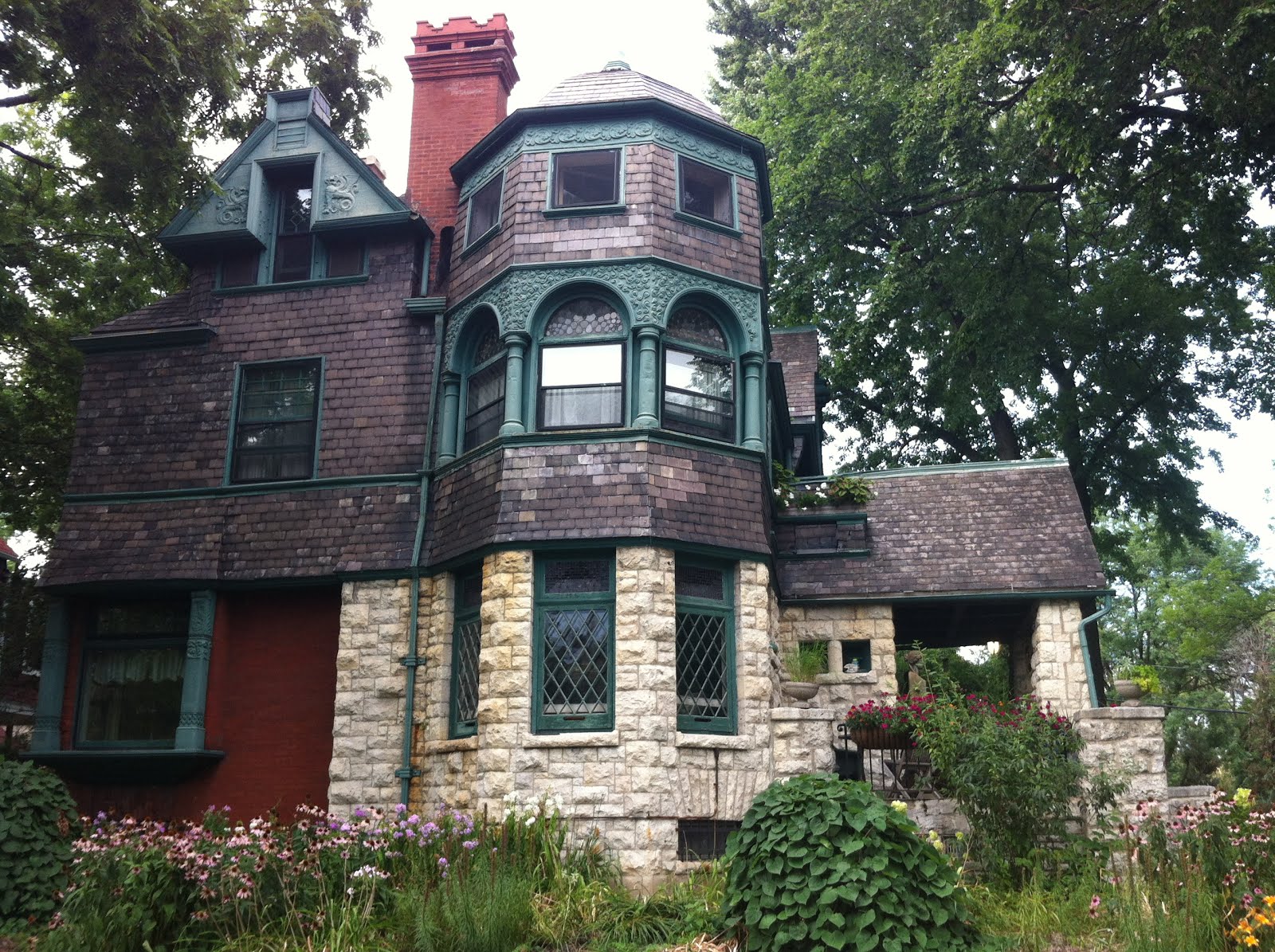
The shingled walls and roof and rusticated stone base are typical for this style. The varied roofline and variance of materials perhaps reflects the goals of the neighborhood development to create gracious living for the established middle-class. Schock attracted several clients in the Austin neighborhood from his architectural advertisement, and today you can tour the neighborhood and view the architecture of plenty of Schock’s elaborate houses.
The Old Brach’s Candy Factory
As a drooler over architecture, one of my favorite feelings in the world is when I’ve read about a building that I’ve never actually seen, I’ve studied it in books and seen it in photos, and then, one day without expecting it, I chance upon its three-dimensional self in real life. And this happened with the Brach’s factory as I noticed the round terra cotta Brach’s logo on the abandoned brick factory from a distance. On my visit there a security approached and said, “Step away from the candy factory. Step away.”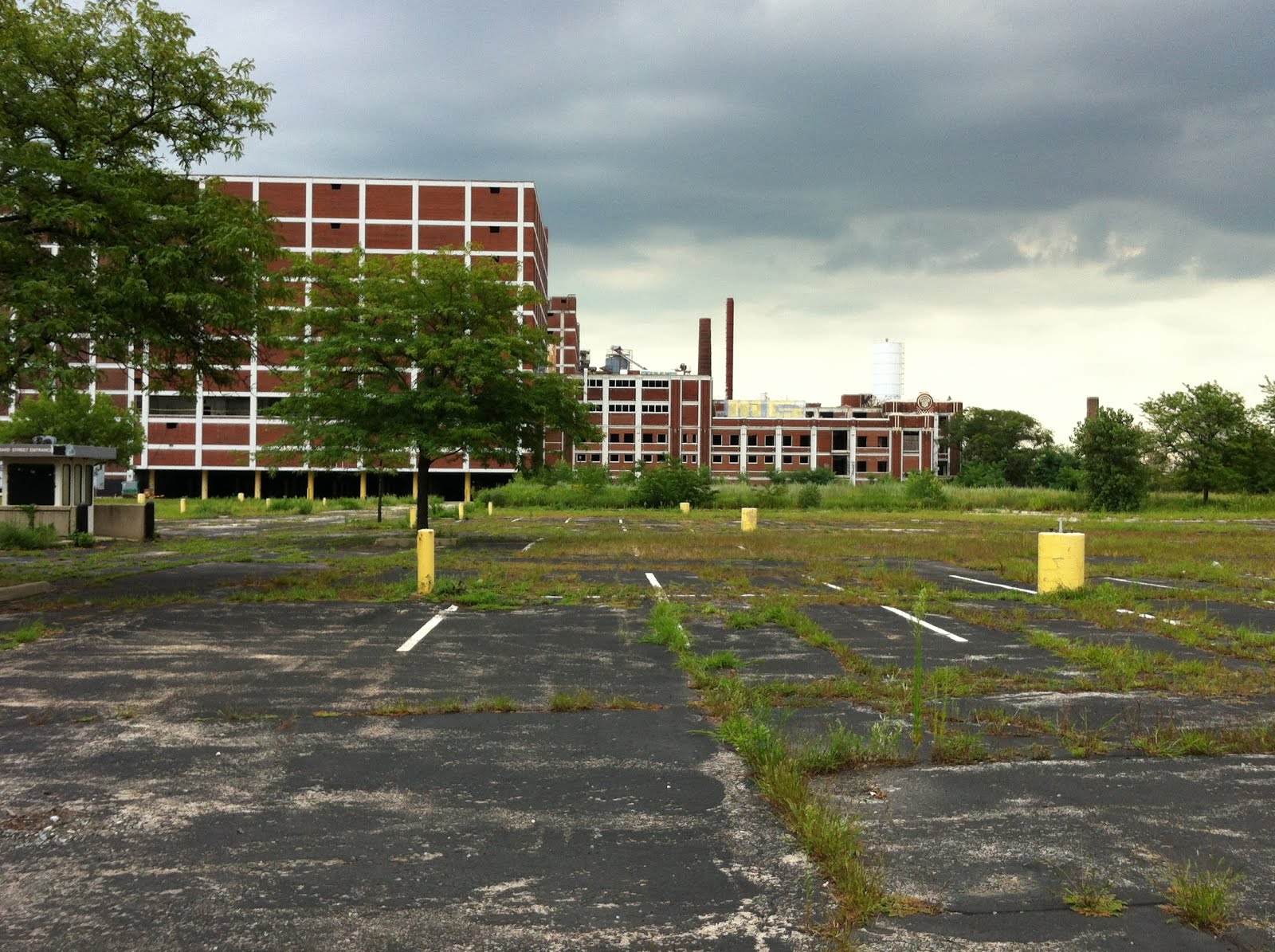
Brach’s built this factory with the help of architect Alfred S. Alschuler. With adding peanut candies, creams, fudges, chocolate dipping, and marshmallow candies to their original repertoire, Brach’s had plenty of sweets to manufacture.
This now saddish site used to be the site of a very colorful workplace. Brach’s broadcast from their own radio station and hosted talent shows. I looked at their “Brach Family Album” from 1944, which showed photos of employees smiling together and various sections of the factory, like the “Secret Room in the Laboratory of Control,” captioned, “showing a Brach’s chemist working at night on a secret Brach’s formula.”
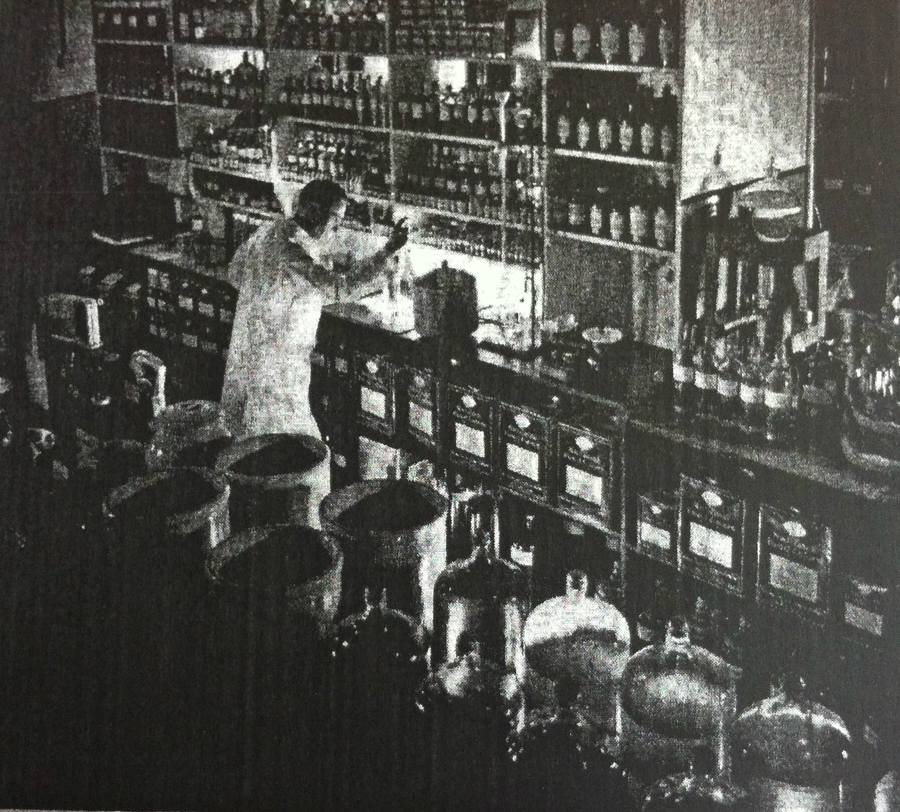
An excerpt from “Brach News” June, 1945, which was “published exclusively for Brach people,” reads “Nature’s most delicious flavors and aromas to be blended into the most pleasing combinations of candy taste appeal. From the shores of the blue Mediterranean Sea….Africa, Italy, and Spain come special types of orange oils. Rose oil is shipped from Bulgaria and Turkey… violet oil from France.” I am eating Brach’s Chocolate Caramel Peanut Clusters while writing. Research purposes, of course. But, sadly, I don’t taste any oils from Spain necessarily.
The Austin Neighborhood Today
It was “Schocking” to go from these colorful newsletters to the neighborhood surrounding the deserted (and not “dessert-ed”) Brach’s factory today. Almost every other house and business on the streets surrounding the plant was boarded up. Among this desertion though I did discover some alluring, well-preserved buildings like the Laramie State Bank or Austin Town Hall.
Built in 1929, this Town Hall was designed to distinguish newly annexed Austin from the rest of Chicago.

In my short time in the Austin neighborhood, I found that the town hall was one of the most lively places. Teens played outside, practiced dance routines in the auditorium, and young people collaborated on projects together. I saw both old and young people working out in the gym downstairs. There’s even a pool on the ground floor!
So could one of the oldest architectural works of the Austin neighborhood also be the key to its success in the future?
— Klaudia Siczek, Editorial Intern

